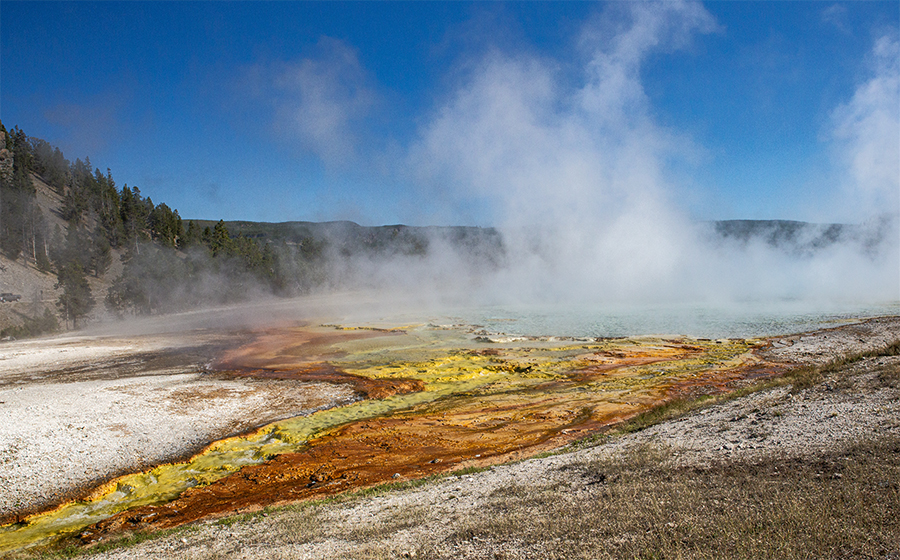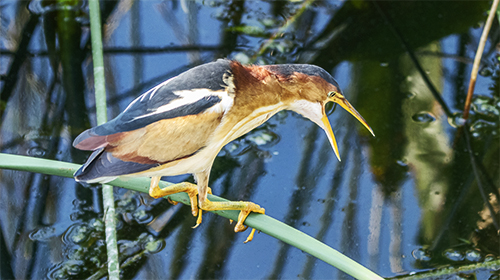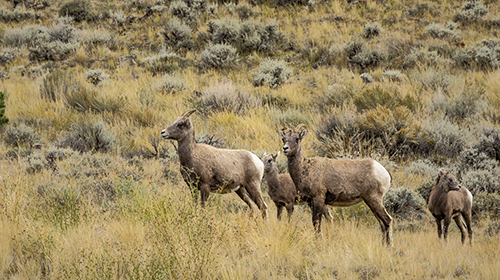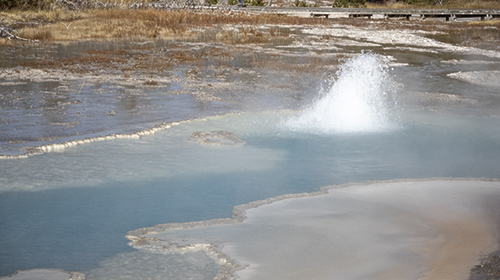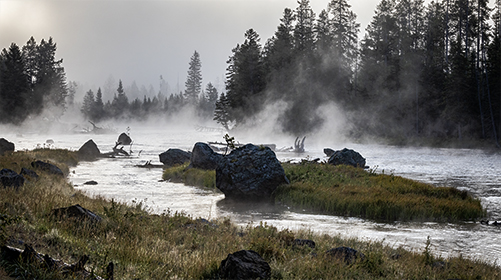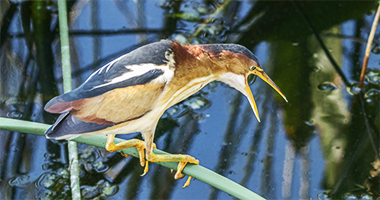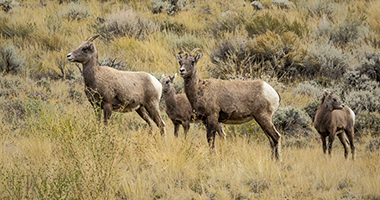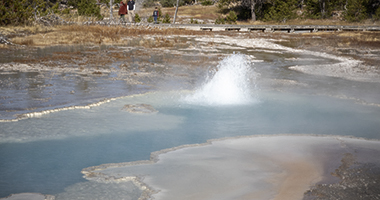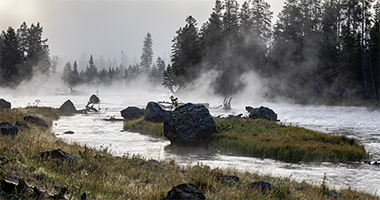Extremophiles
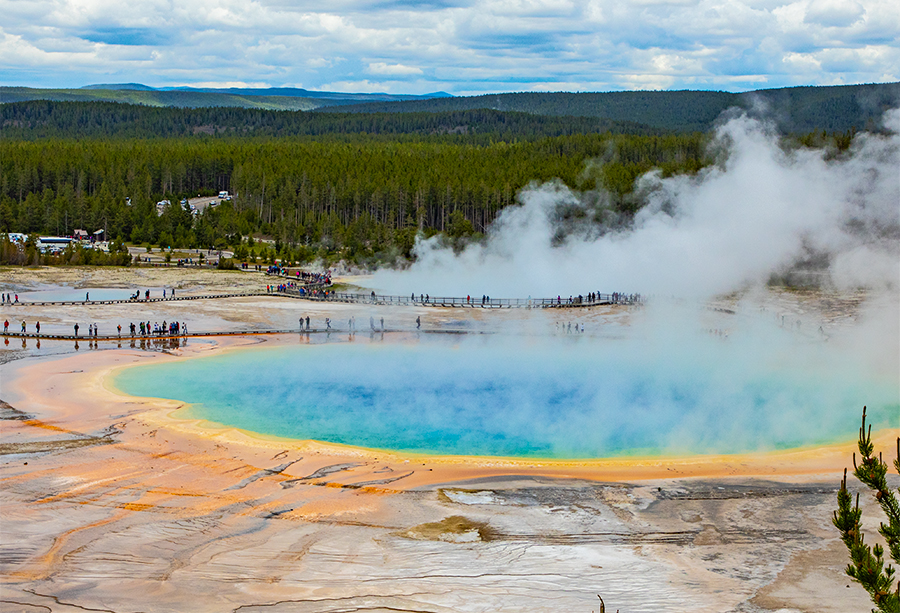
Extremophiles are microscopic organisms that thrive in that could be described as extreme conditions. In Yellowstone, these conditions can include extreme heat or an altered pH—either very low pH (acidic), very high pH (alkaline), or a combination of heat and altered pH
The environments of extremophiles would kill other organisms. However, if their environment would change to conditions that we would consider more hospitable, the extremophiles would perish.
Extremophiles are a type of microorganism, a small living thing that cannot be seen without a microscope. However, colonies, or large groups of microorganisms living together, are visible in many of Yellowstone’s thermal features.
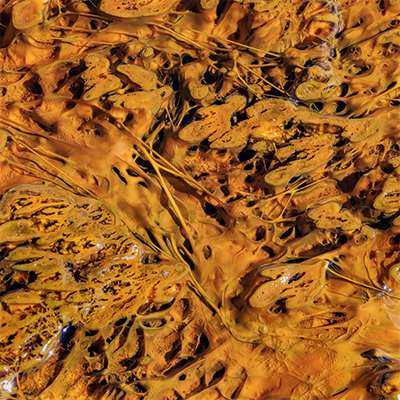
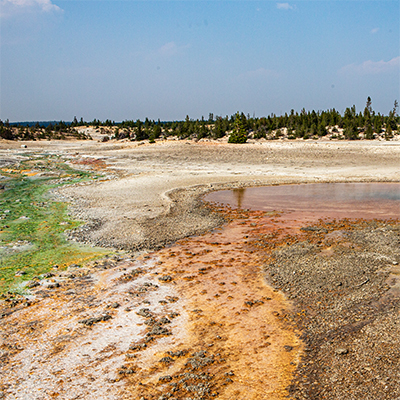
Extremophiles in Yellowstone fall into two categories:
- Thermophiles are microorganisms that live in extremely hot environments.
- Thermophiles thrive in temperatures above 113° F (45° C).
- Hyperthermophiles thrive in temperatures between 176° F (80° C) and 235° F (113° C).
- Some extremophiles require hot conditions but also thrive in an altered pH environment.
- Acidophiles thrive in environments with a pH level of 1 to 5. So, the acidophiles in Yellowstone are actually thermoacidophiles—they thrive in hot and acidic environments.
- Alkaliphiles live and grow in environments with a pH level of 9 to 11.
Let us review what pH measurements mean; pH is a scale of acidity and alkalinity ranging from 1 to 14, with a pH of 7 indicating neutral, neither acidic nor alkaline. Any pH below 7 is considered acidic; anything above is alkaline or basic. A substance with a pH close to 1 would be a powerful acid; a pH close to 14 would be highly alkaline.
To better appreciate the impact of pH, comparing the conditions in Yellowstone’s thermal features to those tolerated by humans may be helpful. In the human body, our normal pH is 7.35 to 7.45. A pH above 7.8 or below 6.8 is generally fatal. Our pH may vary slightly from 7.35 to 7.45 during the day, but only by minute amounts.
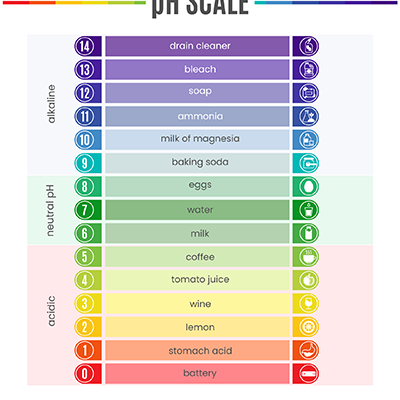
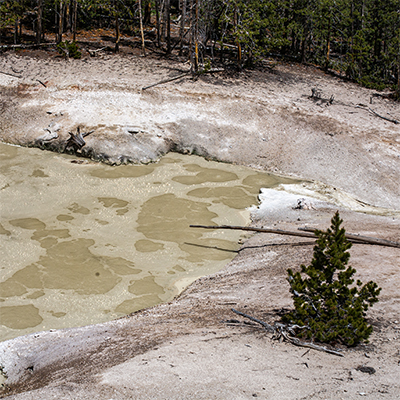
Other extremophiles found throughout the world includes:
- Barophiles microorganisms survive under great pressure.
- Halophiles are aerobic (uses oxygen) microorganism that live and grow in high saline/salty environment.
- Psychrophiles thrive in extreme cold. They grow best in environments of about 14° to 68° F (-10° to 20° C).
- Xerophiles live in extremely dry environments.
“Normal” microorganisms are called mesophiles. They grow best in temperatures between 50° to 122° F (10° to 50° C).
